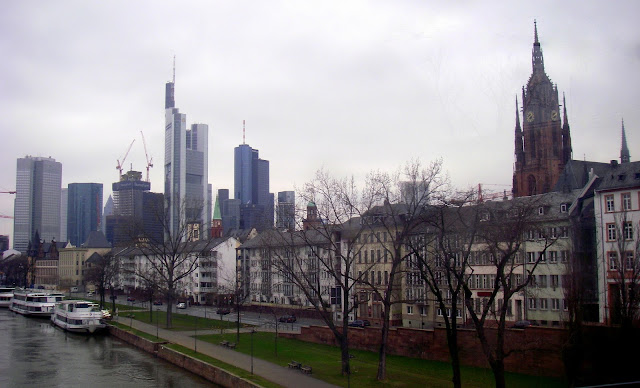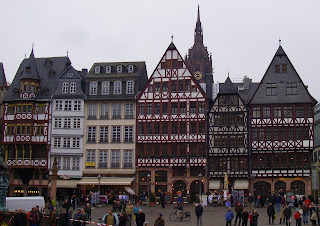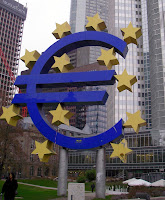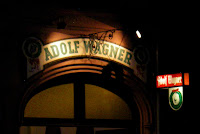 |
| Frankfurt's skyline - new and old meet |
Here is the bare bones, brass tacks list of how to get the most out of a one-day visit to Frankfurt, Germany's financial and transportation hub on the Main River.
 |
| The Städel, overlooking the Main River |
1. Museum District - Start your morning off by visiting some of Frankfurt's more than 30 museums, at least 20 of them located in close proximity to each other along the banks of the Main River, in an area known as the 'Museumsufer' (Museums Riverbank). Some of the museums include:
- Städelsches Kunstinstitut und Städtische Galerie, more commonly known as the Städel, one of Europe's most important art museums
- Museum of World Cultures
- Jewish Museum Frankfurt
- Bible House Experience Museum
- Historical Museum Frankfurt
2. Willy-Brandy Plaza/Frankfurt Opera - Move north across the river to see Oper Frankfurt, home to one of Europe's most important opera companies, and on to Willy-Brandt Plaza, home to the Eurotower and the European Central Bank, as well as the iconic sculpture of Europe's currency, the euro. If you have time in the evening, make sure to return for a performance by the renowned Frankfurt Opera.
3. Goethe House and Shopping District - Continuing north from Willy-Brandt Plaza, arrive at the home of Germany's most famous writer, Johann Wolfgang von Goethe, now preserved as a museum. In addition to penning the celebrated drama Faust, Goethe is widely considered one of the smartest people ever to have lived, with a known IQ of over 200! Near his museum-home, the street bearing his name has now become a ritzy walk lined with shops boasting names such as Hermes and Gucci, and is a great place to shop Europe's premier luxury lines.
At the end of Goethestraße is the Hauptwache, an iconic building in one of Frankfurt's most famous plazas. Formerly a guardhouse and prison, the Hauptwache is now a cafe with outdoor seating in good weather, a great place to rest and people-watch. It is also a central location for travel around Frankfurt, as eight of the nine S-bahn (subway) lines meet here.
 |
| The photo-worthy facades in Frankfurt's Römerberg, with the Kaiserdom in the background |
Nearby is St. Paul's Church, formerly a Protestant church that is particularly significant because it served as the seat for Germany's first democratically elected Parliament in 1848. Now a museum, St. Paul's Church preserves and illuminates records of Germany's political maturation through the years. The Römer is the complex of nine houses and central square that served as the city center and town hall in the 1400s and is now one of the most picturesque places in the city.
5. Sachsenhausen - Finish your tour by crossing back over the Main River, south into the district known as Sachsenhausen. Formerly home to the city's more blue-collar and working class families, Sachsenhausen is a web of small streets and whimsical shops, as well as a number of eateries with fare from all over the globe. In addition to the city's largest flea market, Sachsenhausen is home to Frankfurt's iconic 'apple wine.' Originally brewed by farmers in Sachsenhausen and sold out of their homes, 'apfelwein' is now Frankfurt's favorite drink.
There are a few cider houses in Sachsenhausen that still make apple wine fresh daily and serve it in the traditional manner - out of a bembel (a glazed gray stoneware jar) at long tables with bench seating. Adolf Wagner's has a long history and serves traditional Frankfurt cuisine and a great glass of apple wine, a perfect way to end your tour of Frankfurt!
There are a few cider houses in Sachsenhausen that still make apple wine fresh daily and serve it in the traditional manner - out of a bembel (a glazed gray stoneware jar) at long tables with bench seating. Adolf Wagner's has a long history and serves traditional Frankfurt cuisine and a great glass of apple wine, a perfect way to end your tour of Frankfurt!


No comments:
Post a Comment